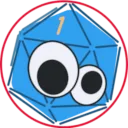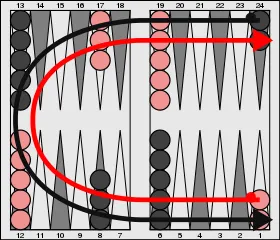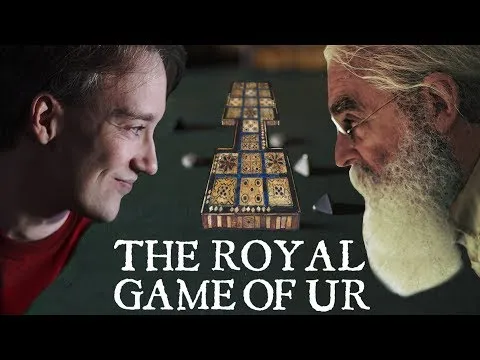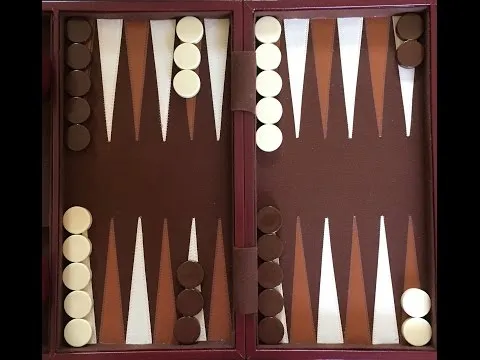A couple months ago, I wrote about learning how to play cribbage from a patron on our library game day. Today, the same patron brought her backgammon board as well, and she went over the basics. Before today, all I knew of the game was that it was often printed on the back of checkerboards, and it somehow involved moving pieces off the board first to win.
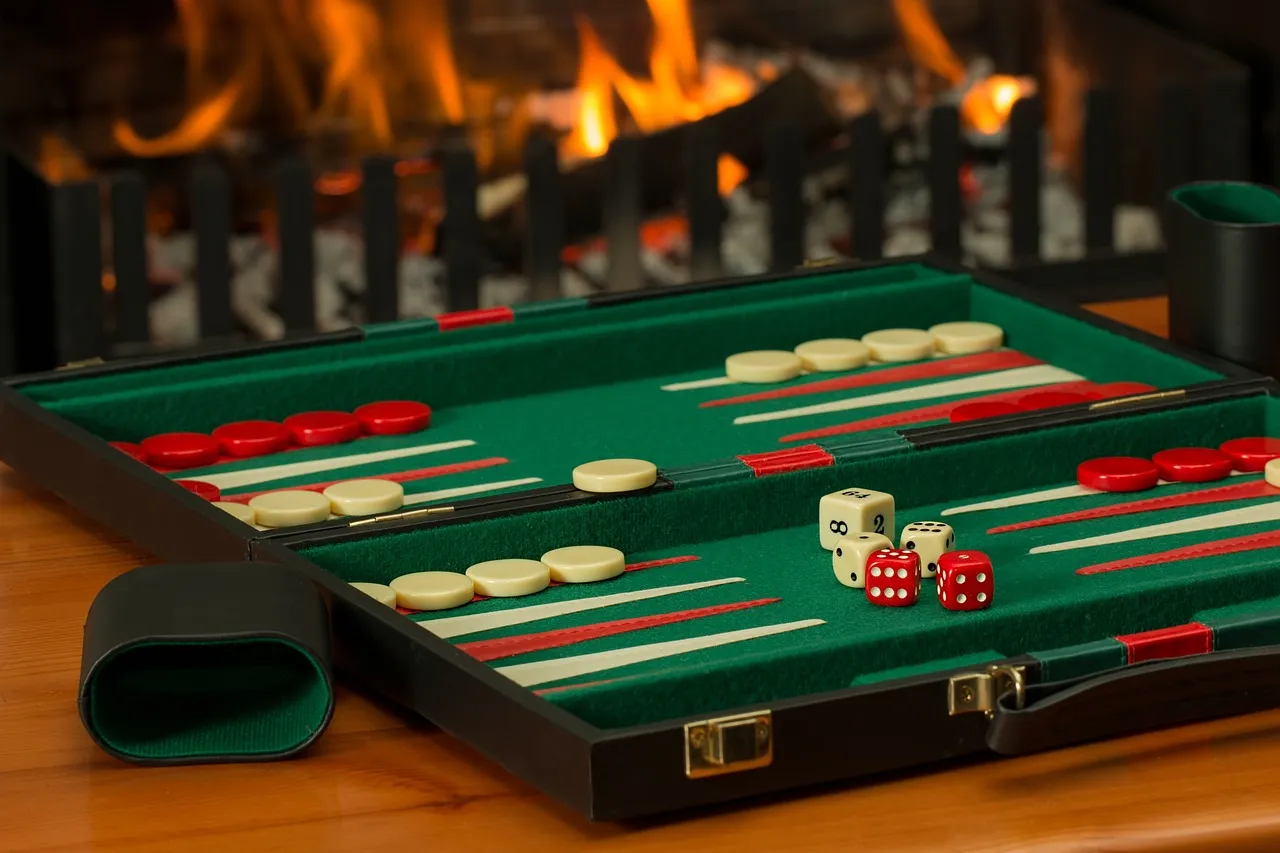
Image credit
The basic principles are simple. Each player tries to race their pieces around the board to their home corner, and then move them each off the board once all are in position. One player goes clockwise, the other counter-clockwise.
The points on the board alternate light and dark. One player has light-colored men, and the other dark. Each player also has a pair of dice matching their men. All pieces start on the board in predefined positions as shown in these images.
Moves are determined by rolling a pair of standard 6-sided dice. at the start of the game, each player rolls one of their dice, with the higher roll winning priority. Turns then alternate. Doubles mean double movement.
Note that there is also a doubling cube used as a marker for gambling, but that was not used. Like many other games, wagers can also add to the stakes of a game, but the library doesn't allow gambling, and friendly games probably don't need that element anyway.
Men can be moved to empty points, points occupied by their own color, or to points held by a single opposing piece, whereupon that solitary undefended piece gets bumped off the board entirely. If a piece is off the board, it gets placed in the center rib and must be moved onto the board with a valid roll before any other pieces can be moved by that player. Since each piece starts in the opponent's "end zone," there is considerable strategy in positioning pieces to make reentry difficult for an opponent while protecting your own men. Only when all pieces have been moved to the home board of the final 6 points can they be "borne off," so getting kicked back to the start when your opponent has their home board spaces each protected by two or more men is very bad.
All of this means every play is a blend of chance and strategy, so it really creates a fun mix which I enjoy in a game. Like I said, I hadn't played this game ever before, but I have enough familiarity with dice, odds, and other games of strategy that I was able to pick it up fairly quickly. I won the first game, but I think my teacher was going easy on me. The second round was much more hard-fought, but some early risks and late defensive strategy plus a good bit of luck led me to a second victory. It was a close thing, though!

Part of how I grasped the concept so quickly was memory of the video below where Tom Scott is introduced to the Royal Game of Ur, the oldest known game where we still have rules.
Tom Scott's videos cover a wide range of interesting topics including history geography, and technology, so check them out!
This kind of racing and gambling game was also probably played in ancient China, India, and Egypt as well with regional variations and different boards, with similar concepts probably part of senet. I also played mancala a lot as a child.
If my description and the Wikipedia links aren't enough to help you learn Backgammon, try borrowing a book of game rules at the library. I also found a video detailing the rules more visually:
This is an excellent passtime as winter sets in here in the northern hemisphere. You may have a board already, so give it a try and let me know what you think in the comments below!

